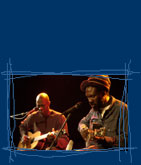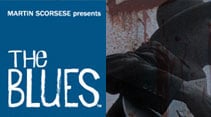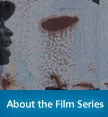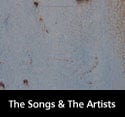








|


When I was growing up, there always seemed to be music in the air. It drifted up from the street, from
the radios of passing cars, from the restaurants and corner stores, from the windows of apartments
across the way. At home, my mother often sang to herself — I have vivid memories of her singing
while she was doing the dishes. My father loved to play his mandolin, and my brother Frank played the
guitar. Actually, it was my father who was the guitar enthusiast, and the first music I remember
hearing was by Django Reinhardt and his Hot Club of France Quintet. At that time, you could always
hear an incredible range of music on the radio, everything from Italian folk songs to country &
western. And my uncle Joe, my mother's brother, had an amazing record collection, which ranged from
Gilbert and Sullivan to swing. He was one of the first people I could really talk to, and I think we
related to each other because of our shared love for music.
One day, around 1958, I remember hearing something that was unlike anything I'd ever
heard before. I'll never forget the first time I heard the sound of that guitar. The music was
demanding, "Listen to me!" I ran to get a pencil and paper and wrote down the name. The song was
called "See See Rider," which I already knew from the Chuck Willis cover version. The name of the
singer was Lead Belly. I got up to Sam Goody's on Forty-ninth Street as fast as I could, and I found
an old Folkways record by Lead Belly, which had "See See Rider," "Roberta," "Black Snake Moan," and
a few other songs. And I listened to it obsessively. Lead Belly's music opened something up for me.
If I could have played guitar, really played it, I never would have become a filmmaker.
At around the same time, my friends and I went to see Bo Diddley. That was another
milestone for me. He was playing at the Brooklyn Paramount, in one of the rock and roll package
shows. He always had great stage moves, and he was a mesmerizing performer. I remember Jerome Green,
on the maracas, dancing out from one side of the stage and Bo Diddley dancing out from the other,
and they kept meeting in the middle and passing each other by. But Bo Diddley also did something
unusual — he explained the different drumbeats and which parts of Africa they came from. It
gave us a sense of the history behind the music, the roots of the music. We all found this very
exciting, and it gave us a thirst for more knowledge. We wanted to dig deeper.
In the early sixties, my preference was for Phil Spector, Motown, and the girl
groups, like the Ronettes, the Marvelettes, and the Shirelles. Then came the British Invasion.
Like everyone else, I was floored by this music, and struck by its strong blues influence. The
more I understood the history behind rock and roll, the more I could hear the blues behind it.
With some of the new British music, the blues came to the forefront, and the bands were paying
homage to their masters in the same way that the French New Wave filmmakers were paying homage to
the great American directors with their films. There was John Mayall and his Bluesbreakers. There
was the first installment of Fleetwood Mac, with Peter Green on guitar, basically a blues band.
There were the Stones, whose music had a heavy blues accent right from the start, and who did
cover versions of "Little Red Rooster," "I'm a King Bee," "Love in Vain," and many others. And,
of course, there was Cream. I still love to sit alone in a room and wrap myself up in that music.
They created an amazing fusion of blues and hard rock, and some of their most beautiful songs
were covers: "Rollin' and Tumblin'," the old Delta classic, which I first heard on volume one of
Live Cream; Robert Johnson's "Crossroads," which was one of their
biggest hits; and "Sitting on Top of the World," which was on Goodbye Cream
. When I heard that song I went back and found the original, by the great Mississippi Sheiks.
Around the end of the sixties, this urge to find the roots of the music really
started to spread. People all over the country were discovering the blues, and it went way
beyond a specialized audience. At that time, the music wasn't as readily available as it is
now. You would have to search for certain titles, and others you could find in reissues and
package collections. The blues had such a powerful mystique, such an aura around it, that
certain names would suddenly be in the air, and you just had to have their records. Names
like Son House, which I heard for the first time when we were editing Woodstock
. It was Mike Wadleigh, the director, who brought in the record. Someone who once
heard Caruso sing said that he was so moved that his heart shook. That's the way I felt the
first time I heard Son House. It was a voice and a style that seemed to come from way, way
back, from some other, much earlier time and place. About a year later, there was another
name: Robert Johnson. Another ancient voice, another soul-stirring experience.
It was my love for music, which has never stopped growing, that led me to do
The Last Waltz. I wanted to make it more than just a document of The
Band's last concert. Because it was more than just a musical tribute — it was a
tapestry of music history, The Band's music history. And every one of those performers —
one legend after another — made up a thread in that tapestry. But when Muddy Waters
walked onto that stage and sang "Mannish Boy," he took control of the music, the event, the
history, everything. He electrified the audience, took it all up to another level and back
to the source at the same time. He gave a phenomenal performance, and I will always consider
myself privileged to have been there to witness it, to film it, and to give it back to
millions of people with the finished film. It was a defining moment for me.
Over the last ten years or so, this search for historical roots has found
its way into my moviemaking. I've made two documentaries on the history of cinema —
one on American movies, then another on Italian cinema. And I decided early on that I
wanted them to be personal, rather than strictly historical surveys. It seemed to me that
this was the best way to work: The teachers from whom I learned the most were always the
most passionate, the ones with a deeply personal connection to the material. For
The Blues series, I decided to do something similar.
The project began when Cappa Productions producer Margaret Bodde and I
were working on a documentary with Eric Clapton called Nothing but the
Blues, where we intercut footage of Eric performing blues standards with
archival footage of older blues musicians. We were all struck by the elemental power
and poetry of these juxtapositions — it seemed like such a simple yet eloquent way
of expressing the music's timelessness. It also gave us a way of approaching the
history of the blues in cinematic terms. So it seemed like a natural progression to
ask a number of directors whose work I admired, each with a deep connection to the
music, to make his own personal exploration of blues history. By having each of them
come at the subject from his own unique perspective, I knew we'd come away with
something special, not a dry recitation of facts, but a genuinely passionate mosaic.
For my own film, which was the first in the series, the idea was to take
the viewer on a pilgrimage to Mississippi and then on to Africa with a wonderful young
blues musician named Corey Harris. Corey isn't just a great player, he also knows the
history of the blues very well. We filmed him in Mississippi talking to some of the old,
legendary figures who were still around and visiting some of the places where the music
was made. This section culminates in a meeting with the great Otha Turner, sitting on
his porch in Senatobia with his family nearby and playing his cane flute. We were also
fortunate to film Otha's magnificent November 2001 concert at St. Ann's in Brooklyn,
which I believe was his last performance captured on film. It seemed natural to trace
the music back from Mississippi to West Africa, where Corey met and played with
extraordinary artists like Salif Keita, Habib Koité, and Ali Farka Toure. It's
fascinating to hear the links between the African and American music, to see the
influences going both ways, back and forth across time and space.
The links between Africa and the blues were always very important
to Alan Lomax, and that's one of the reasons I wanted to include him in my film. I
relate strongly to Lomax's instinct, his need to find and record genuine sounds and
music before the originators died away. It's hard to overestimate the importance of
what he accomplished — without him, so much would have been lost.
Otha Turner's music was a link to Africa, and Lomax spent a great
deal of time exploring that connection. That elemental music, made with nothing but
a fife and drum, has always fascinated me. When I first heard it, I was editing
Raging Bull by night. I was enthralled — it sounded
like something out of eighteenth-century America, but with an African rhythm. I
never even imagined that such a music could exist. I found an audio tape of Otha's
music, and I listened to it obsessively over many years. I always knew that it
would play a key role in Gangs of New York. That project
went through many false starts, and it changed quite a bit over the years, but one
thing that never changed was the idea that it would include fife and drum music.
When I finally did get to make the picture, we were lucky enough to be able to use
a piece by Otha and his Rising Star Band, and I used it as playback on the set to
propel the action — it gave the film an energy and power it would have lacked
otherwise, and it helped to create a world we had never seen before. When the picture
came out, many people understandably thought they were listening to Celtic music and
were surprised to discover that it was by Otha Turner, from north Mississippi.
The sense of continuity and transformation in the blues, the way past,
present, and future are joined as one dynamic creative entity, never ceases to amaze me.
Earlier this year, we staged a "Salute to the Blues" concert here in New York, which
Antoine Fuqua filmed for our series. It was an event I'll never forget, and the spirit
of that night was summed up memorably by Ruth Brown, who said: "It's so great that we're
all here together — and it's not for a funeral!" The sheer range of music that
night was something to marvel at, and the beauty of the playing and singing was
incomparable. There were some musicians who completely transformed the music, and made a
kind of twenty-first-century blues. Chris Thomas King did a version of Son House's "John
the Revelator" with turntables and a synth guitar. He kept piling layers of sound on top
of one another, and managed to create something completely modern and surprising but
very much in keeping with the voice of the blues.
This idea of continuity and transformation runs through all the films
in the series. Charles Burnett made a poetic and personal drama about blues life seen
through the eyes of a young boy. Wim Wenders made an evocative film that moves in a
dreamlike fashion through past, present, and future, in order to conjure three
different bluesmen. Dick Pearce made a terrific film about Memphis, with Bobby Rush and
the great B.B. King. Marc Levin did Chicago blues, featuring Chuck D and Marshall Chess
in the studio with the Electric Mud band recording great new tracks with members of The
Roots — once again, you get a strong sense of ongoing transformation in the blues
here. Mike Figgis, who is himself a musician, made a film about the British blues scene,
in the form of a story told by many of its creators. Clint Eastwood paid a very elegant
tribute to the great blues piano players, Jay McShann, Pinetop Perkins, and others. All
of these wonderful films are like pieces in a mosaic, in the end a moving and dynamic
portrait of a great American art form.
People like to
think of the great blues singers as raw, instinctive, with talent and
genius flowing from their fingertips. But John Lee Hooker, Bessie Smith,
Muddy Waters, Howlin' Wolf, Blind Lemon Jefferson, and so many other amazing
talents, more names than I have space for here, are some of the greatest
artists America has ever had. When you listen to Leadbelly, or Son House,
or Robert Johnson, or John Lee Hooker, or Charley Patton, or Muddy Waters,
you're moved, your heart is shaken, you're carried and inspired by its
visceral energy, and its rock solid emotional truth. You go right to the
heart of what it is to be human, the condition of being human. That's
the blues.
—Martin Scorsese
|






|











